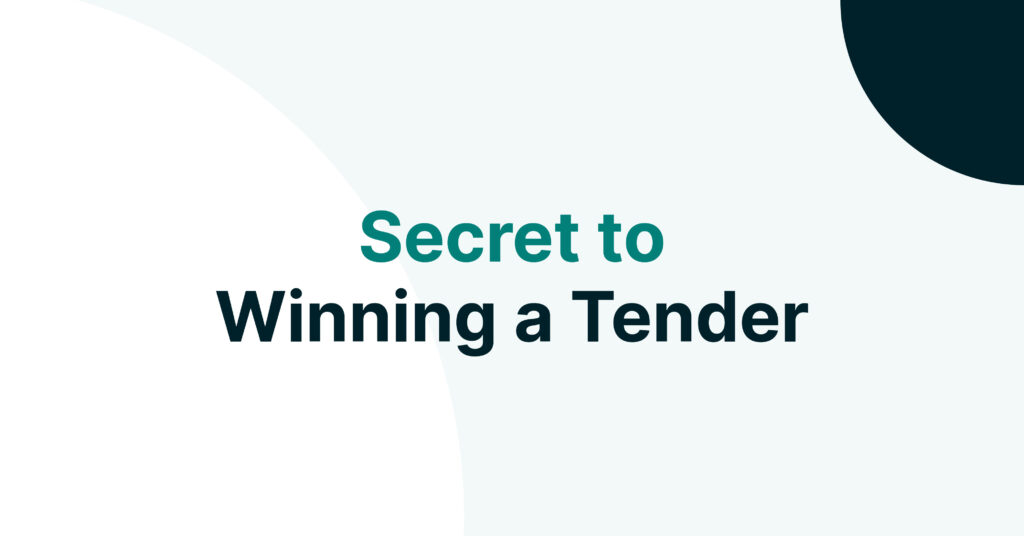11 things you’ll wish you knew sooner about tendering
Everything you’ll need to know about tendering, starting with what is meant by “tender”?
There is so much information out there about tendering. It can often leave you scratching your head wondering, what is meant by “tender”? At Tender VLE, we want you to understand everything you need to know about tendering. That’s why we put together this guide of things you wish you knew sooner.
What is meant by a tender?
A good starting point is to describe what tendering is if you’re not familiar with the term. Tendering is the process in which an organisation that is in need of goods/services invites parties to bid on the tender. This invitation is known as an Invitation to Tender (RFT). The company that publishes the request and needs the goods/services is called the “buyer”. The company that responds to that request is known as the “supplier”.
Now we’ve cleared up what is meant by a tender, let’s focus on other aspects that are worth knowing about.
The tender process
If you are not familiar with the process, it can seem a little daunting or confusing. Below are the following steps of the process that will help you understand what is meant by tender:
-
Try to pre-empt the tender before it lands on your desk
In an ideal world, you would already know about the bid before it has gone public. If you find out about a bid before it is published, you’re prepared for when it does go live.
Sometimes, buyers will publish Prior Information Notices, known as PINs. They may also release market engagement notices and pre-market engagement questionnaires. This gives you an indication that the buyer will be releasing a tender in the near future. Responding to these notices can give you an advantage when it comes to writing the ITT. You can make a real impact on the specification and the requirements.
-
To bid or not to bid
Many factors may impact on your decision whether to bid or not for a contract.
Follow the below checklist to help decide if a tender is worth bidding on:
1. Do you have three case studies that are similar in scope, scale and value to the tender?
2. Is it financially viable? Would you be making a profit?
3. Do you offer something unique in the market? What are the unique selling points (USP) of your business? What do you do that your competitors don’t?
4. Does this fit in with a long-term strategy? Does this fit with the key targets for your company?
5. Do you need to outsource any work, if so, then how much?
6. Does your company have the ability to deliver the project if successful?
7. Most importantly, do you have time to commit to this?
-
Research the buyer
It’s important to research the buyer if you’re going for the bid. This will help you gain a better understanding of their business and how you can fulfil their needs.
-
Assess the competition
There’s no way of directly knowing who you will be competing against. Keep your competitors in mind when writing your bid response.
You will need to understand how you can stand out against your competitors to win the bid. For example, what USP do you have over them and how can you use that to your advantage?
-
Decide again, to bid or not to bid?
Once you’ve received the bid documents and read through them, it’s time to be make a final decision. At this stage, it is imperative that you understand the question being asked and what the requirements are. You need to have a good understanding of what the buyer wants and whether you can fulfil their needs. If you don’t understand the bid, then it’s obvious you shouldn’t go for it.
-
Get started on the bid
We hope you’re still reading to find out more on what is meant by a tender. Great, now we still have your attention, let’s talk about getting started on the bid.
You should decide who will undertake each section of the document and give clear indications of a deadline date. You may need a few people to work on the bid. This will not only save time, but individuals may have better experience/knowledge to answer certain parts of the bid.
Remember, if you do need information from other departments, you need to factor this into the deadline. Be sure to leave your colleagues enough time to gather the information ahead of the submission.
-
Plan the bid
The most important part before you write the bid is to plan it. You can’t jump straight into writing the bid, if you don’t know what you’re going to write. By writing a plan it will help you cover all the points of the question. It will ensure you have understood what has been asked and that you construct a clear and detailed answer. Think about the content and structure you’re going to follow.
-
Write the bid
By now, you should understand what is meant by a “tender” and you can write the bid. You’ve read the tender documents, carried out your research and constructed a plan. Time to start writing that winning bid.
When it comes to bid writing, many people are inexperienced or don’t have the time to write a bid.
Our sister company, Hudson Succeed, offers bid writing services to increase your chances of winning. Collectively, we have 60 years’ experience and an 87% success rate. You can contact our bid writers and get a free quote for them to take care of the whole process.
-
Review the bid
Before you submit your, bid it’s important that you review it to iron out any mistakes. The last thing you want to do is submit the bid full of mistakes. Bad grammar and spelling will lose the bid immediately. It is worth having a second pair of eyes reading the bid to ensure it doesn’t have any errors.
-
Submit the bid
Now all the hard work is complete, and you are happy with your finished bid, you can submit it. It’s important to keep an eye on the deadline date throughout the whole tender process. You want to make sure you have sufficient amount of time to complete your bid. If you don’t keep up to schedule with your planning, it will impact your ability to write a winning bid.
-
Feedback
The final step of the tender process is requesting feedback. It’s important to request feedback after submitting your bid, particularly if you didn’t win the bid. This will help you evaluate how the bid writing process went for you and your team. It will help you learn what your strengths and weaknesses are.
If you didn’t win your bid, ask why and ask for suggestions to help you write a successful bid next time. It’s useful to write this information down so you know how you can improve when writing your next bid.
We have only covered the tip of the iceberg here. There’s still plenty of things to know about tendering, like terminology.
Listed below are some of the most commonly used terms which will help you understand what is meant by a “tender”:
- Award criteria – A list of key criteria or requirements that your bid will be scored against.
- Bid – A formal proposal to deliver goods or services.
- Bid Management – The process of managing the submission of a tender and managing the bid team.
- Contract – A binding agreement between parties to perform/deliver specified goods.
- ESPD – European single procurement document.
- EOI – Expression of interest.
- Framework Agreement – An agreement between multiple suppliers, usually divided into lots. This type of tendering procedure allows suppliers to bid for the services they can provide, instead of the whole contract.
- ITT – Invitation to tender.
- PQQ – Pre-qualification questionnaire. This is intended to help draw a shortlist.
- Procurement – the process of obtaining goods and services from an external source.
- RFP – Request for proposal.
- RFT – Request for tender. A formal, structured invitation to suppliers to submit or bid to supply products or services. It’s another way of saying ITT.
- RFQ – Request for Quotation. Suppliers are invited to provide a quote for the provision of specific goods or services.
- RFI – Request for information. This is necessary to decide the procurement process. It typically occurs during the planning process.
- Supplier – a person or organisation responsible for delivering goods or services.
- Tender/tendering – the process of bidding for work or contracts.
Now we’ve covered the terminology and understood the basics of what it meant by tender, let’s talk about different tenders.
- Open tendering – This involves inviting submissions from the open market.
- Public sector tenders – Most tendering opportunities are published by public sector departments. This is because publicly funded authorities must spend their money fairly.
- Private sector tenders – Organisations that are privately owned can also seek tendering opportunities to outsource goods/services. They don’t follow the same regulations as the public sector.
Anything else we can help with?
If you have any more questions about writing a winning tender, then Tender VLE will have the answer.
Join the UK’s first ever virtual learning environment for a whole range of free tender-related videos. Whether you have years of tendering experience or are starting out from scratch, Tender VLE will have something for you.
Think there’s something missing? If you can’t find the video you’re looking for, then tell us more about the content you’d like to see!
See something you like? Contact our team for a quick chat and start your learning journey with Tender VLE today.
Need to find tendering opportunities?
Enter Discover Elite…
Discover Elite ensures that you never miss a tendering opportunity, even when you’re busy.
Upgrade your tendering experience and take the next step to success.
Contact our team to find out more!








